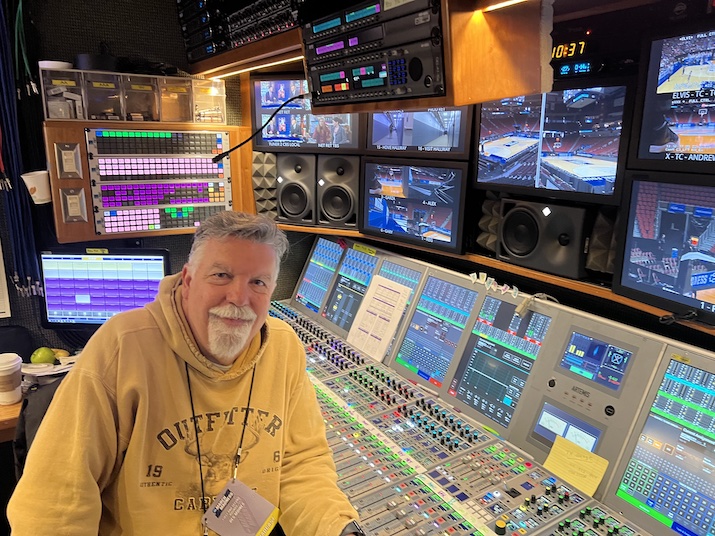Signature Sound Helps Broadcasters Stand Out Among March Madness Tournaments
With fans, bands, and cheerleaders, managing ambiance is key
Story Highlights
One thing that makes March Madness unique is that the array of tournaments spans multiple broadcasters. This year, CBS Sports is airing 24 games, including the Final Four Semifinals and the National Championship, as well as multiple First Round, Second Round, Sweet 16, and Elite 8 games. Meanwhile, Warner Brothers Discovery Sports is televising 18 games across the First and Second Rounds, Sweet 16, and Elite 8; WBD Sports-owned truTV will air 13 First Four and First and Second Round games.
With many of the same technology platforms and even the same gear deployed for this annual D-Day–level enterprise, one way broadcasters differentiate themselves while maintaining continuity among broadcast channels is to develop a signature sound.
Emphasis on Ambience
WBD Sports Senior Audio Supervisor, Remote Operations, Dave Grundtvig says he focuses on the games themselves but also on the arenas and their crowds and entertainment.

WBD Sports’ Dave Grundtvig aboard Game Creek Celtic during First and Second Round games of March Madness 2023 in Des Moines
“Each game,” he points out, “has the same x number of cameras and x number of tape machines, and you’ll get a pretty consistent experience network to network. The individuality and flavor of the broadcast comes through the director and others managing the broadcast: how they cut the game and how and when they choose to show replays. The audio people play the same kind of role in that, in what we choose to focus on and emphasize that can capture the essence of the arena and the action on the court.”
Grundtvig’s palette comprises the ambience of the arena itself — the Wells Fargo Arena in Des Moines, IA, where he oversaw WBD Sports’ audio for as many as four games a day, implemented a 94-element Electro-Voice XLD291 system in 2020 at a reported $1.7 million — as well as the 16,000-plus fans in the stands, the school bands, and the cheerleaders. NCAA basketball games can roar as loud as 109 dB, so there’s a lot of acoustical clutter to cut through.
Like most A1s, Grundtvig started out engineering music recordings, and those skills come into play for sports. To capture the bands, he sets up a pair of Shure VP88 stereo condenser microphones in a mid-side configuration, combined with a Neumann KM194 small-diaphragm condenser microphone.
“The M-S mics provide the stereo spread and let me vary that width as necessary during the course of the game,” he explains. “The 184 is the ‘spot’ mic, which creates the center focus for the music. It all brings the music across nicely and lets it sound distinct while sitting in the crowd noise and part of the overall sound of the game.”
Grundtvig, who is working with audio-assist Dave Bjornson and Victor Victoria managing the production’s RF, notes that director Andrew Greathouse gives him wide latitude in how he captures and mixes March Madness.
“He wants me to be aggressive and capture everything,” he says, but he also lets me do my thing. It’s all about great storytelling, following the announcers calling the game and then having the audio and video match that. Let what happens in front of you dictate what’s going on but take in the entire space. There are narratives taking place [on the court], and that’s what the show is all about. But the action around that, in the stands — the fans, the bands — is also part of the narrative. How you get that across organically is a big part of making each network’s signature.”
